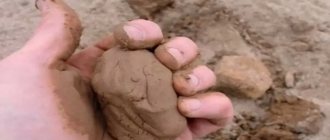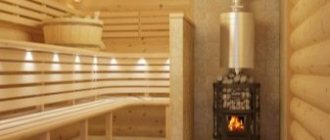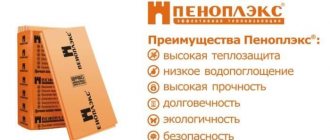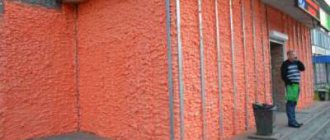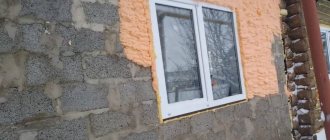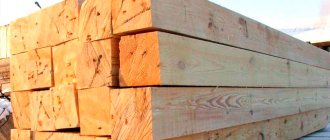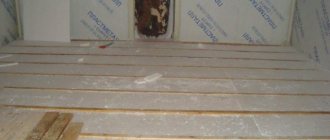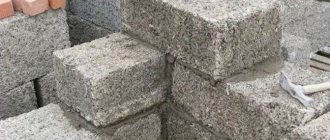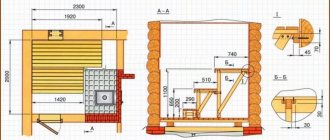In the modern world, there are more and more opportunities in the manufacturing sector. Technological capabilities made it possible to get acquainted with the latest material called perlite. This is a unique product that in a short time has taken a high place in the construction market.
The technology for producing perlite is quite complex. It is made from glass-like hard rock of volcanic origin. The raw material has the ability to increase significantly when heated to a certain extent. This swelling process during heat treatment, together with the addition of other materials, makes it possible to obtain heat and sound insulating raw materials with excellent characteristics.
Perlite
Technical characteristics of insulation
Expanded porous perlite made from rock is used for insulation
Rock is formed in a lava flow during a volcanic eruption. It is formed as a result of the action of groundwater on volcanic glass. The mineral has a specific structure and easily breaks down into separate round parts - pearls. Another distinctive feature of porous rock is its water content of about 1% of the total volume.
In construction, expanded perlite insulation is used, which has undergone heat treatment in ovens at a temperature of 1100°C. When heated, moisture evaporates, giving the mineral a porous structure and increasing its size several times. The material becomes light and acquires heat-insulating properties. It is manufactured with different fraction sizes from fine sand to crushed stone. The dimensions of construction perlite are 0.16-1.25 mm, agroperlite – 1-5 mm. Perlite sand has a wide variation in density - 40-200 kg/m3.
Specifications:
- thermal conductivity – 0.043-0.052 W/m*K;
- humidity by weight – no more than 2%;
- unevenness of grain sizes – up to 15% by volume of the product;
- moisture absorption – up to 400% of its own weight.
The insulation is chemically neutral and is not affected by alkalis and weak acids. It does not rot under the influence of moisture, microorganisms and rodents do not live in it. The heat insulator is used in a wide temperature range from -200°C to +900°C. The material is environmentally friendly for people and does not contain toxic impurities or heavy metals.
Thermal insulating perlite plasters
The use of a material based on expanded perlite fractions helps reduce thermal conductivity by up to 50%. The weight of the structure is also reduced. In addition, plaster based on perlite sand makes the surface more attractive . Due to the presence of perlite in the mixture, properties such as fire resistance and noise absorption are improved.
Perlite-based plaster is versatile, because it can be applied to the surfaces of different materials - brick, concrete, metal, wood and slag concrete. Another advantage is the ability to paint the plaster layer without preliminary surface treatment. The same applies to wallpapering. Thanks to the roughness, finishing materials adhere well to the plaster.
In addition to perlite, the mixture includes cement, water, and air-entraining additives. The ratio of components varies significantly, but expanded sand is always taken in the same quantity. Possible options for the ratio of cement and perlite: 1:4, 1:5, 1:6, 1:8.
Pros and cons of perlite
Perlite plaster also has heat-insulating properties
When choosing bulk insulation, consumers have to compare several materials: expanded clay, expanded polystyrene granules, vermiculite or perlite. Each variety has characteristics that are taken into account when making a decision. Loose-fill volcanic glass insulation is highly effective. The material does not shrink like granulated polystyrene foam and does not get wet like expanded clay. The main advantages of insulation are:
- Low thermal conductivity of perlite, which is provided by many voids in the porous structure of the mineral. Also, the structure of the mineral contributes to effective noise absorption.
- Light weight, allowing up to 40% reduction in the total weight of the structure. Light load-bearing walls do not require a massive foundation.
- The ability to operate in different temperature ranges does not limit the use of the material.
- Fire resistance guarantees the fire safety of the insulation. It is able to stop the spread of fire. When heated, it does not emit smoke or toxic substances.
- The natural mineral is environmentally friendly and contains no harmful impurities.
- Loose insulation evenly fills the space, fits tightly, leaving no cold bridges. The material does not cause difficulties when filling like foam granules.
Fragility is the main disadvantage of perlite. The mineral is easily destroyed, turning into dust. The material loses weight during open transportation and creates inconvenience during backfilling. Working with it requires the use of protective equipment: respirators, goggles, gloves. To make sand less dusty, it is moistened with water before use.
Perlite's ability to absorb moisture is not always a negative characteristic. It can easily release water in the form of steam. The material prevents condensation from appearing on the walls. For normal operation of the insulation, it is necessary to ensure the removal of excess moisture to the outside.
Features of heated floors in a wooden house
Accordingly, all layers of the “pie” will be laid on the support beams: subfloor, vapor and waterproofing layers, finishing treatment for laying the floor covering and the cladding itself.
Naturally, among all these layers there will be a heating system. The underfloor heating system is laid on top of the rough base with an emphasis on preparing various protective and insulating layers for the system elements. To install a warm floor in a wooden house with your own hands, you can use one of the following methods:
- A combination of dry and concrete screed. This is a universal technology that involves laying two types of screed at once, which allows it to withstand heavy loads on the floor. It can be used for a wide variety of heating systems. The dry bulk part of the screed allows for increased hardness and strength to protect the heating elements of the heating system.
- Liquid screed over existing floors. This is perhaps the most difficult method, as it requires careful preparation of the wooden beams. Concrete screed is highly valued due to its thermal insulation properties and increased heating efficiency of the entire system as a whole. It is most advantageous to use such a base in rooms with high humidity, cold and heavy flooring.
- Free installation with ventilation gap. It is used exclusively for heating equipment as an auxiliary system in relation to the main heating of the house. In combination with ventilation gaps, a powerful heating system cannot be used; additional holes as air outlets will reduce the efficiency of the system.
- Application of reflective plates. This option is a compromise if you cannot do without pouring a concrete screed. The plates are used to reflect the flow of thermal energy, increasing heating efficiency.
Application area
For flowers, perlite is used as a leavening agent.
In its natural form, the mineral is used in various economic fields:
- the food and medical industries use the mineral as a cleaning filter;
- Perlite loosening additives are popular in agriculture.
When constructing buildings, expanded perlite is usually used. It allows you to ensure optimal sound and heat insulation of walls, floors, and roofs. The insulation is effective when the backfill and composition of the insulating products are uniform. It is used to fill the masonry of external and internal walls, when installing a heated floor system, and insulating floors.
Wall insulation
Walls between two rows of bricks are insulated with perlite
Conclusion
Despite its many advantages, this material is not the cheapest option, and the use of perlite is economically justified in the regions where it is produced, since delivery significantly increases the already not the most budget price. But it is guaranteed to be formaldehyde free and fire resistant, so no fire resistant protective layer is needed.
For information on other types of heat insulators, see the article on choosing insulation for a private home. The possibility of using perlite as a filler is discussed in the material on warm plaster. Perlite can also replace expanded clay backfill in a dry screed. In the video there is an alternative option, insulating the ceiling with polystyrene foam.
Subscribe to our Telegram channel Exclusive posts every week
We study all known varieties
In total, there are 4 forms of release of this insulation: backfill (it is also called sand), slabs (outwardly similar to penoplex), roofing models and dry building mixtures. These varieties have some features that you should know.
Backfill insulation
The first form factor of Perlite to emerge was loose insulation. The main task of this material in the construction of houses is to lighten the structure (it is lighter than a standard cement-sand mixture) and increase its thermal insulation qualities. This layer is usually used for backfilling floors and interfloor layers. It is also often used to fill voids in wall masonry. Less often it is used in combination with (or instead of) warm plaster.
The most convenient and practical form is slabs
According to official statistics, about 60% of all Perlite produced on the planet goes to create thermal insulation boards. They are obtained by hydraulic pressing, making them very convenient to use. The binder may differ depending on the specific type (bitumen, lime, polymer compounds, cement, liquid glass, etc.).
This category of materials has quite high hygroscopicity. Therefore, it is mostly used for interior decoration. However, when laying an additional moisture-proof layer, it can also be used for exterior finishing. However, this is not very justified from an economic point of view.
Insulation of coatings with slabs: mineral wool or perlite on bitumen mastic in one layer
LOCAL RESOURCE GIVEN GESN 12-01-013-03
| Name | Unit |
| Insulation of coatings with slabs: mineral wool or perlite on bitumen mastic in one layer | 100 m2 of insulated covering |
| Scope of work | |
| 01. Preparing the base. 02. Primer of the base. 03. Laying slabs on bitumen mastic. 04. Preparing the primer. |
PRICE VALUES
The price list shows the direct costs of the work for the period of March 2014
for the city of Moscow, which are calculated on the basis of
2014 standards with additions 1
by applying indices to the prices of the resources used.
2000
federal prices .
The following indices and hourly rates from the “Union of Cost Estimating Engineers” were used: Index to the cost of materials: 7.485
Index to the cost of machines:
11.643
Hourly rates used: The monthly wage at a given hourly rate is indicated in parentheses.
Hourly rate 1st category: 130.23 rubles. per hour ( 22,920
) rub.
per month. Hourly rate 2nd category: 141.21 rubles. per hour ( 24,853
) rub.
per month. Hourly rate 3rd category: 154.46 rubles. per hour ( 27,185
) rub.
per month. Hourly rate 4 categories: 174.34 rubles. per hour ( 30,684
) rub.
per month. Hourly rate 5th category: 200.84 rubles. per hour ( 35,348
) rub.
per month. Hourly rate 6th grade: 233.96 rubles. per hour ( 41,177
) rub. per month.
By clicking on this link, you can see this standard calculated in 2000 prices. The basis for applying the composition and consumption of materials, machines and labor costs are GESN-2001
LABOR COSTS
| № | Name | Unit Change | Labor costs |
| 1 | Labor costs of construction workers Grade 3.9 | person-hour | 45,54 |
| 2 | Labor costs for drivers (for reference, included in the price of the EV) | person-hour | 0,55 |
| Total labor costs for workers | person-hour | 45,54 | |
| Workers' compensation = 45.54 x 172.35 | Rub. | 7 848,91 | |
| Payroll for drivers = 124.27 (for calculating invoices and profits) | Rub. | 124,27 |
Work schedule. Automatic construction according to estimates.
OPERATION OF MACHINES AND MECHANISMS
| № | Cipher | Name | Unit Change | Consumption | St. unit.Rub. | TotalRub. |
| 1 | 020129 | Tower cranes when working on other types of construction 8 t | mach.-h | 0,35 | 1005,96 | 352,09 |
| 2 | 021141 | Truck-mounted cranes when working on other types of construction 10 t | mach.-h | 0,2 | 1303,9 | 260,78 |
| 3 | 121011 | Mobile bitumen boilers 400 l | mach.-h | 1,84 | 349,29 | 642,69 |
| 4 | 400001 | Flatbed vehicles, load capacity up to 5 tons | mach.-h | 0,28 | 1014,92 | 284,18 |
| Total | Rub. | 1 539,74 |
CONSUMPTION OF MATERIALS
| № | Cipher | Name | Unit Change | Consumption | St. unit.Rub. | TotalRub. |
| 1 | 101-0078 | Petroleum construction roofing bitumen grades BNK-45/190, BNK-45/180 | T | 0,025 | 11452,05 | 286,30 |
| 2 | 101-0322 | Kerosene for technical purposes grades KT-1, KT-2 | T | 0,058 | 19512,65 | 1 131,73 |
| 3 | 101-0594 | Hot bitumen roofing mastic | T | 0,201 | 25374,15 | 5 100,20 |
| 4 | 104-0004 | Mineral wool slabs with synthetic binder M-125 (GOST 9573-82) | m3 | 6,18 | 3967,05 | 24 516,37 |
| Total | Rub. | 31 034,61 |
TOTAL BY RESOURCES: 32,574.35 RUB.
TOTAL PRICE: RUB 40,423.26.
You can see this standard calculated in 2000 prices. by following this link
The price is compiled according to the standards of GESN-2001 as amended in 2014 with additions 1
in prices
of March 2014.
To determine intermediate and final price values, the DefSmeta program was used
Estimate for the construction of a house, renovation and decoration of apartments - DefSmeta
Rental
The program provides an assistant who will turn the preparation of estimates into a game.
Criterias of choice
To select a thermal insulation material with high technical characteristics, you should determine the product labeling. Three main classes of perlite are used in construction - M75, M100 and M150.
The numbers indicated in the markings indicate the bulk density of the material. Which corresponds to thermal conductivity - 0.043, 0.052 and 0.058 Watt/m °C. The lighter the perlite, the higher its heat and sound insulation properties.
The expanded rock is divided into different fractions. For construction, perlite with granules ranging in size from 0.16 to 1.25 millimeters is used. The larger the constituent particles of the material, the lower the level of its fluidity, which worsens the quality of the insulation backfill.
When purchasing perlite for thermal insulation, you should pay attention to the integrity of the packaging and storage conditions. If the material was in a humid environment for a long time, its quality decreased significantly. Another important aspect of the choice is the manufacturer. Some unscrupulous sellers may pass off an artificial construction product as natural foamed perlite.
Features of the flooring system
The traditional version of a water-type floor involves installing pipes in a screed. It is poured with a concrete solution with special additives that increase its thermal conductivity.
As a result, the concrete pad becomes a kind of heat accumulator, which makes it possible to use such heating as efficiently as possible. However, the traditional arrangement method has disadvantages.
The wooden base has low thermal inertia, which prevents the system from functioning normally. To correct this drawback, heat-reflecting plates are installed from metal with high thermal conductivity.
The most obvious is too much weight of the concrete screed. With a solution density of about 2000 kg/sq. m it gives a significant additional load on the base and load-bearing structures.
For reinforced concrete slabs, such a load is quite feasible. For wooden floors - prohibitive. For this reason, the traditional installation method is prohibited in such cases. The so-called flooring system is used here.
It is made in the form of a low flooring, inside of which pipes are located. Wood is most often used for its arrangement, but industrially produced polystyrene flooring has appeared relatively recently.
The pipes are placed in grooves where they are secured. It is known that wood conducts heat very poorly. For this reason, wooden systems cannot be an effective source of heat.
To correct this deficiency, metal heat-conducting elements are inserted into each groove. They also strengthen the structure. There are similar details in polystyrene flooring with metal inserts, the material of which is also a poor heat conductor. In this way, a reliable and durable heating system is assembled.
Its advantages over its traditional analogue can be considered:
- Light weight of the flooring, which even wooden floors can withstand.
- Relatively simple assembly, especially when it comes to industrial flooring models.
- There is no need to wait for the concrete screed to harden. Finishing work can be done immediately after installation.
- Full maintainability. To carry out repair work, it is enough to lift a fragment of the flooring to provide access to the area with the fault.
Another undeniable advantage of the flooring system is its versatility, which makes it possible to implement a variety of modifications. Most of which are homemade. The main disadvantage of the flooring scheme is rapid cooling. The floor heats up in a short time and gives off heat just as quickly.
A big plus of a water-based floor is the possibility of relatively simple repairs. To get to the damaged fragment, it is enough to remove a section of the floor covering and remove the flooring underneath itActually, the heat supply is limited to that which is in the coolant liquid in the pipes. Therefore, when the boiler is stopped, the room will soon cool down. For this reason, deck systems are more often used as an addition to the main heating system, especially in cold regions.
DIY insulation technology
The process of blowing in expanded perlite sand is not labor-intensive and takes little time. Seams and cracks on walls and cavities in blocks can be perfectly filled with perlite-based mortar, which can be easily made with your own hands by selecting the necessary materials.
Materials
In terms of thermal insulation properties, perlite sand, 30 mm thick, is equivalent to sand-lime brick, 200 mm thick, and mortars with the addition of volcanic sand are effective insulation.
The following are added as binding materials:
- liquid glass;
- cement;
- bitumen;
- clay, lime;
- gypsum.
A mixture of perlite and a binder is made in belt mixers at low speeds so as not to disturb the structure of the perlite grain.
From building mixtures you can press products of various shapes, make bricks and other necessary structures.
Sequence of work
Work on insulating the house begins with laying the foundation:
- the bases of strip foundations and basements are plastered with mixtures containing perlite chips and insulated with heat-insulating blocks;
- when constructing walls, perlite expanded sand is backfilled every 3-4 rows of masonry, compacting it;
- Next, a layer of plaster no more than 5 cm thick is applied to the walls.
The voids are filled based on the bulk density for each cubic meter - 70-100 kg of perlite component.
Upon completion of the construction of the walls, they are covered with ceiling slabs, all cracks are carefully sealed and the insulation of the ceiling begins:
- cover the slabs with cardboard or paper;
- pour expanded perlite sand 3 cm thick onto it and compact it;
- filled with cement.
Fly in the ointment, or shortcomings
Of course, they exist, and there are a lot of them, which explains the rather limited use of insulating materials of this type. This is mainly due to vertical insulation. Bulk insulation is quite impractical in this regard.
With the bulk insulation method, strong compaction is required, which requires additional equipment and, accordingly, costs. Otherwise, the material will compact and sag over time. This means that some of the walls will remain without thermal protection, and the house will lose its heat-saving properties.
Pouring granules (or laying cotton wool) requires a certain space for filling or laying. This means that additional formwork will be required - temporary or permanent (another wall at a specified distance from the insulated one). And this will lead to heavier construction of the house, the need to strengthen the foundation and, as a result, to considerable additional expenses and “eating” square centimeters of living space.
You can, of course, add a composition based on cement mortar to the insulation. But here the disadvantages are the same: the need to strengthen the foundation and reduce the usable area of the home. And its main property - flowability - in this case the isolate loses, and accordingly, its sound-insulating and heat-saving properties are significantly reduced.
However, despite all these disadvantages, when insulating a house horizontally, dense “monolithic” insulation is significantly inferior to bulk insulation. Especially if the house has an attic or second floor, that is, when high-quality sound insulation of the second floor floor is needed.
By choosing the right thermal insulation material for your home, you can not only save money, but also build truly high-quality, energy-saving housing. Yes, and nerve-saving too. After all, by protecting residents from street and interior noise, such houses are able to preserve their health for many years not only due to their environmental friendliness, but also a comfortable psychological microclimate.
Popular publications:
Review of high-quality insulation for the home: how to choose the right insulation Modern manufacturers offer a huge selection of all kinds of materials,…
How to dilute acrylic primer? Acrylic primer often comes in the form of a concentrate or dry powder, which...
What is important to know about preparing the surface for installing insulation When the homeowner has a question: how to fix...
Insulation for a frame house Insulation for a frame house With the advent of frame technologies, the dream is to acquire your own…
Operational life
Perlite chips have excellent performance qualities. It has been performing its functions for many years, maintaining its original condition without losing its visual appeal.
The service life of perlite is unlimited, unless it is damaged mechanically.
Perlite has high physical and technical properties, which is why it is so in demand; it is the best among thermal insulation materials.
When purchasing, you need to be vigilant - it is not so easy to find expanded perlite chips on the market and unscrupulous sellers can pass off a fake as real perlite.
Converting an attic into an attic
An attic with one of the perimeter sizes from 10 m and a slope slope of 40° - 45° can be converted into a small attic with a ceiling height of 2 - 2.5 m in the central part (under the ridge), even if it is a regular gable roof.
There is also the option of converting a gable or hip roof into a sloping (mansard) roof. In this case, technical expertise is required to assess the safety margin of the foundation and load-bearing walls for such reconstruction. Additional insulation, sheathing, trim, furniture and appliances increase the total design load.
There are two options for converting an attic into an attic without reconstructing the roof:
- Insulation of the entire roof. If necessary, a counter-lattice is placed on the rafters for laying mineral wool in two layers, attaching a vapor barrier to it and lathing for interior decoration.
- Insulation of the attic perimeter. Along the ridge, on the eaves side, between the ceiling and the rafters, racks are installed that define the perimeter of the living space.
The roof is insulated starting from the mounting point of the racks and to the ridge (or beam of the upper frame). If the ceiling is hemmed along the strapping, then it is insulated like the wooden ceiling of a cold attic.
Frame walls are mounted along the racks, into which insulation mats are laid. The entire area of the insulated perimeter is covered with a continuous and unbroken layer of vapor barrier. On top of the vapor barrier, lathing is installed to the load-bearing wooden elements for the internal lining of the attic.
Note. The insertion of attic windows into the roof and the installation of stairs between the lower floor and the attic are carried out before the stage of insulation and finishing.
Comparison of perlite with other thermal insulators
To thoroughly understand all the advantages of this material, it is necessary to compare it with existing analogues:
- Vermiculite. The production technology of this heat insulator is similar. However, having a porous structure, this material has higher thermal conductivity. In addition, it is more expensive in price;
- Expanded polystyrene. It is difficult to fill cavities in walls with this heat insulator. In addition, it is flammable and releases toxic substances when burned;
- Expanded clay. It is considered one of the most common insulating materials. And although it is as cheap as perlite, its thermal conductivity is 2 times higher than the latter. However, it is completely unsuitable for thermal insulation of door and window openings;
How electricity heats the floor in a wooden house
- single heating cable;
- heating mats (analogue of a cable fixed to the base in the form of a mat);
- infrared film 0.5 mm thick (carbon strips between parallel power buses);
- carbon rods (analogous to film without a film base).
Each method is designed for its own type of coating and has certain advantages and disadvantages. If the floor covering is ceramic tiles or porcelain stoneware and similar materials, it is better to use a single heating cable or heating mats. For floors covered with carpet, laminate, parquet, etc., it is better to use carbon or film heated flooring. This coating effectively transmits infrared rays, heating the entire floor area
For all types of underfloor heating, it is important to determine whether it will be the main or auxiliary heating in the house
It is more advisable to use warm electric floors based on a heating cable or mat on the first floors of the house, taking into account their installation under a cement screed, on which the flooring is then laid. However, warm electric flooring can be done without a cement-concrete screed. The snake cable or mats are laid on top of a metallized reflector lying on a base made of a layer of thermal insulation. Floorboards and flooring are laid on top.
Vermiculite
This is a slightly different substance. Its basis is hydromica, usually magnesium-iron with a very complex mineral composition, like perlite containing water bound by crystalline hydrates. Obtaining vermiculite is somewhat more complicated, but swelling itself occurs at the last stage at 850–880 °C, while the layered structure of mica begins to collapse under the influence of evaporating water, increasing in volume by 15–20 times.
Since the original natural mineral was subjected to water and wind erosion for millions of years, there are practically no soluble compounds left in it, but they appear after the destruction of crystalline hydrates. Vermiculite contains a large number of various microelements, thanks to which for some time it can work as a microelement fertilizer and growth stimulator for plants.
However, its mineral composition depends on the deposit of the feedstock. There are varieties without iron (batavit, Germany), with a high content of copper (copper vermiculite) or chromium (lucasite). Iron-containing biotite is more common on the Russian market (Kovdor deposit, Murmansk region). Therefore, information on how to use vermiculite, for which plants, with a description of the mineral composition of its specific variety and subtleties of use, is usually contained in the accompanying documentation.
Ready vermiculite inherits all the properties of natural mica. It is not abrasive, relatively elastic, and looks like flat, elongated crystals.
Common colors: black, golden yellow, greenish, brown. Density 65–130 kg/m³. Porosity 65–90%. Chemically inert (average PH = 7), environmentally friendly, does not interact with most acids and alkalis, has high wettability - the weight of absorbed water can reach 500% of the weight of vermiculite, is not subject to chemical and biological decomposition, is not of interest to insects and rodents .
The fired material is ground to a grain size of 0.1–20 mm, but in agriculture the fraction of 0.8–5.0 mm is mainly used. This is the so-called agrovermiculite. You can buy it in almost any gardening store, however, the labeling of the finished product depends on the manufacturer’s technical specifications (TS). For example, VVF-1.0 – fraction 0.315–1.6 mm (Korda LLC, St. Petersburg).
Roof insulation
The use of expanded perlite is not limited to wall insulation, since the roof also requires additional thermal insulation. For these purposes, a fraction of the material is used, similar to that required for wall insulation. To carry out thermal insulation, perlite must be poured between the sheathing and roof sheathing, periodically tapping it to better compact the material.
Often bituminized perlite is used, that is, mixed with bitumen. It has an adhesive and durable structure. The advantage is the fact that laying bituminized perlite does not require heat treatment and hardens on its own. However, for beginners it is more convenient to use ordinary bulk material, since it is more convenient to distribute it without the presence of certain skills.
